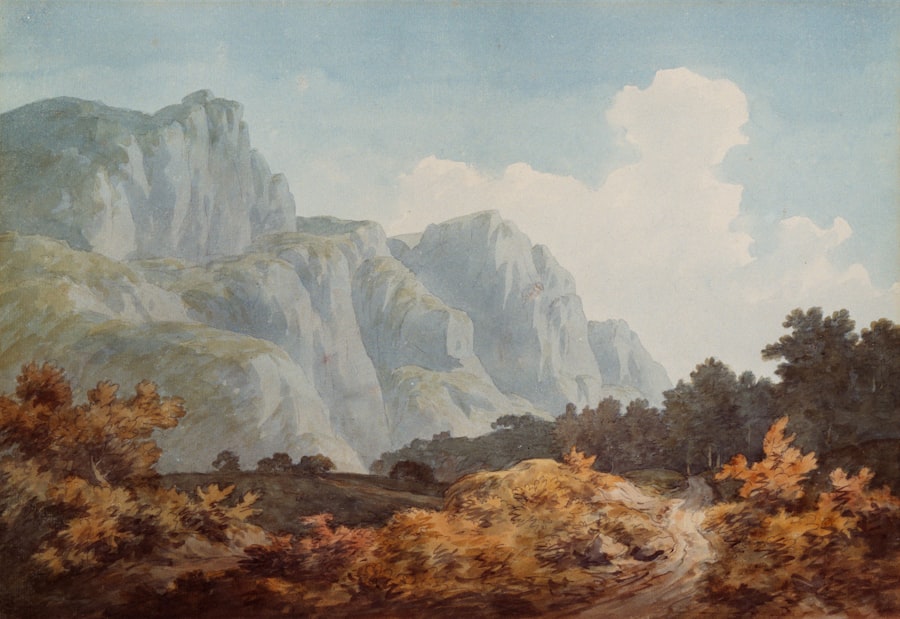The Ahom Period, spanning from the 13th century to the 19th century, marks a significant chapter in the history of Assam, a northeastern state of India. The Ahoms, originally from the Tai ethnic group, migrated from present-day Myanmar and established a kingdom that would endure for nearly 600 years. This era is characterized by remarkable political stability, military prowess, and cultural flourishing, which laid the foundation for the Assamese identity.
The Ahom dynasty’s ability to resist external invasions, particularly from the Mughals, is a testament to their strategic acumen and military organization.
The Ahom rulers were not only adept at governance but also fostered an environment conducive to trade and agriculture.
They implemented innovative irrigation techniques that transformed the agrarian landscape of Assam, leading to increased productivity and prosperity. The Ahom Period is often viewed as a golden age for Assam, where the confluence of various ethnicities and cultures resulted in a rich tapestry of traditions and practices. The legacy of this period continues to resonate in contemporary Assamese society, influencing its social structures, artistic expressions, and cultural norms.
Key Takeaways
- The Ahom Period in Assam, India, lasted from the 13th to the 19th century and was characterized by the rule of the Ahom dynasty.
- Ahom Period art and architecture were influenced by various cultures, resulting in the construction of impressive temples, palaces, and monuments.
- The cultural legacy of the Ahom Period includes traditional dance forms, music, and festivals that continue to be celebrated in Assam today.
- Ahom Period literature and language saw the development of the Assamese language and the creation of important literary works.
- Religious and spiritual practices during the Ahom Period included the worship of various deities and the construction of temples and religious institutions, which continue to be important in modern Assamese culture.
Ahom Period Art and Architecture
Art and architecture during the Ahom Period reflect a unique synthesis of indigenous styles and influences from neighboring regions. The Ahoms are renowned for their distinctive architectural achievements, particularly in temple construction and fortification. One of the most notable examples is the Sivadol temple complex in Sivasagar, which showcases intricate carvings and a blend of Hindu architectural elements with local motifs.
The temples built during this period often featured towering shikharas (spires) and elaborate sculptures that depicted various deities, illustrating the religious fervor of the time. In addition to religious structures, the Ahoms constructed impressive palaces and administrative buildings that served as symbols of their power and sophistication. The Rang Ghar, an amphitheater built for royal entertainment and public gatherings, is a prime example of Ahom architecture.
Its unique oval shape and tiered structure highlight the engineering prowess of the time. The use of laterite stone and brick in construction not only provided durability but also allowed for intricate designs that have withstood the test of time. The artistic expressions during this period were not limited to architecture; they extended to textiles, pottery, and metalwork, showcasing the skilled craftsmanship of local artisans.
Cultural Legacy of the Ahom Period

The cultural legacy of the Ahom Period is profound and multifaceted, influencing various aspects of life in Assam. One of the most significant contributions was the promotion of Assamese culture through festivals, music, dance, and cuisine. The Bihu festival, which celebrates the agricultural cycle, has its roots in this period and continues to be a cornerstone of Assamese identity.
The Ahoms encouraged local traditions while also integrating elements from their Tai heritage, resulting in a vibrant cultural milieu that embraced diversity. Moreover, the Ahom rulers were patrons of arts and literature, fostering an environment where creativity could thrive. This patronage led to the emergence of various forms of folk music and dance that are still celebrated today.
Traditional instruments like the dhol (drum) and pepa (horn) became integral to Assamese music during this time. The culinary landscape also evolved significantly, with the introduction of new ingredients and cooking techniques that enriched Assamese cuisine. Dishes such as khar and pitha reflect this cultural amalgamation, showcasing the Ahoms’ influence on local gastronomy.
Ahom Period Literature and Language
The literary contributions during the Ahom Period are noteworthy for their richness and diversity. The rulers encouraged the use of Assamese language in administration and literature, which played a crucial role in shaping regional identity. The period saw the emergence of significant literary figures who wrote extensively in Assamese, contributing to poetry, drama, and historical narratives.
Notable works include “Buranji,” historical chronicles that documented the history of the Ahom dynasty and its interactions with neighboring kingdoms. The influence of Sanskrit literature was also evident during this time, as many scholars translated classical texts into Assamese. This bilingualism enriched the literary landscape and made literature more accessible to the common people.
The blending of oral traditions with written forms resulted in a unique narrative style that captured the essence of Assamese culture. Folktales, myths, and legends were preserved through oral storytelling, ensuring that cultural values were passed down through generations.
Religious and Spiritual Practices during the Ahom Period
Religion played a central role in the lives of the Ahoms and their subjects. Initially followers of Theravada Buddhism, the Ahoms gradually adopted Hinduism as they settled in Assam. This transition was marked by the incorporation of Hindu deities into their pantheon while still honoring their ancestral spirits.
The syncretic nature of their religious practices is evident in festivals that celebrate both Hindu gods and local deities, reflecting a harmonious coexistence of beliefs. The Ahom kings were known for their patronage of Hindu temples and rituals, which became focal points for community gatherings and spiritual activities. Temples like Kamakhya in Guwahati gained prominence during this period as centers of worship and pilgrimage.
Additionally, the Ahoms practiced ancestor worship, which was integral to their cultural identity. Rituals honoring deceased ancestors were performed regularly, reinforcing familial bonds and social cohesion within communities.
Impact of the Ahom Period on Modern Assamese Culture

The impact of the Ahom Period on modern Assamese culture is profound and enduring. Many aspects of contemporary Assamese identity can be traced back to this era, including language, customs, and social structures. The promotion of Assamese as a medium for administration laid the groundwork for its status as an official language in Assam today.
This linguistic legacy has fostered a sense of pride among Assamese speakers and has been instrumental in preserving regional literature. Culturally, festivals like Bihu continue to be celebrated with great enthusiasm across Assam, serving as a reminder of the agricultural roots established during the Ahom Period. The traditional music and dance forms that flourished during this time remain integral to Assamese celebrations today.
Furthermore, culinary practices influenced by the Ahoms have become staples in Assamese households, with dishes reflecting a blend of indigenous ingredients and cooking methods. In terms of social structure, the Ahom Period contributed to a sense of unity among diverse ethnic groups within Assam. The policies implemented by Ahom rulers promoted inclusivity and cooperation among various communities, fostering a spirit of tolerance that persists in modern Assamese society.
This legacy is particularly relevant in contemporary discussions about identity and cultural preservation amidst globalization. The enduring influence of the Ahom Period is evident not only in cultural practices but also in political consciousness among modern Assamese people.
As Assam navigates contemporary challenges, the lessons learned from the resilience and adaptability demonstrated by the Ahoms serve as guiding principles for future generations.
If you are interested in exploring the intersection of technology and culture, you may also enjoy reading about strategies for effective reading of academic texts. This article provides valuable insights into how to approach and digest complex academic material, which can be helpful when delving into the rich history of Ahom Period Art and Cultural Legacy. Check out the article here for more information.
FAQs
What is the Ahom Period?
The Ahom Period refers to the rule of the Ahom kingdom in the region of present-day Assam, India, which lasted from the 13th century to the 19th century.
What is Ahom Period Art?
Ahom Period Art refers to the artistic and cultural expressions that flourished during the rule of the Ahom kingdom, including architecture, sculpture, pottery, weaving, and other forms of artistic production.
What are some characteristics of Ahom Period Art?
Some characteristics of Ahom Period Art include intricate designs, use of natural materials, influence of Hindu and Buddhist motifs, and a focus on religious and royal themes.
What is the cultural legacy of the Ahom Period?
The cultural legacy of the Ahom Period includes the preservation of traditional art forms, the development of unique architectural styles, and the establishment of cultural practices that continue to influence the region today.
How did the Ahom Period contribute to the cultural heritage of Assam?
The Ahom Period contributed to the cultural heritage of Assam through its patronage of the arts, its architectural achievements, and its role in shaping the religious and social practices of the region.






















+ There are no comments
Add yours